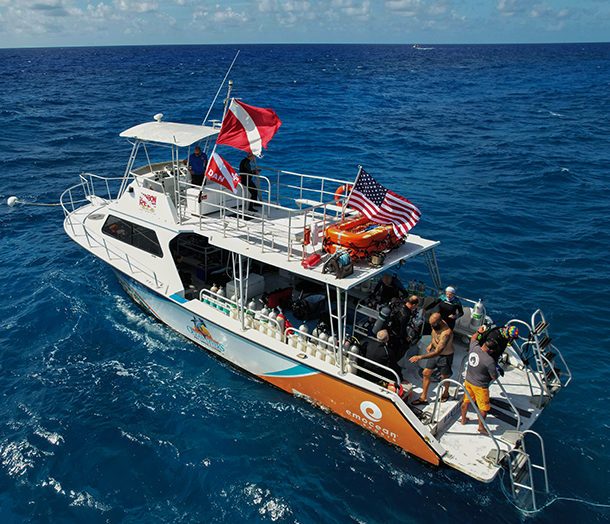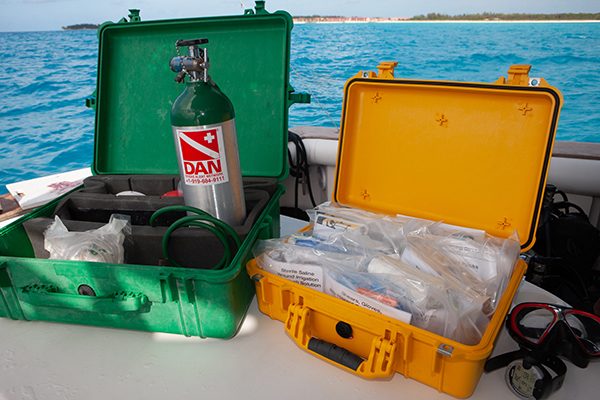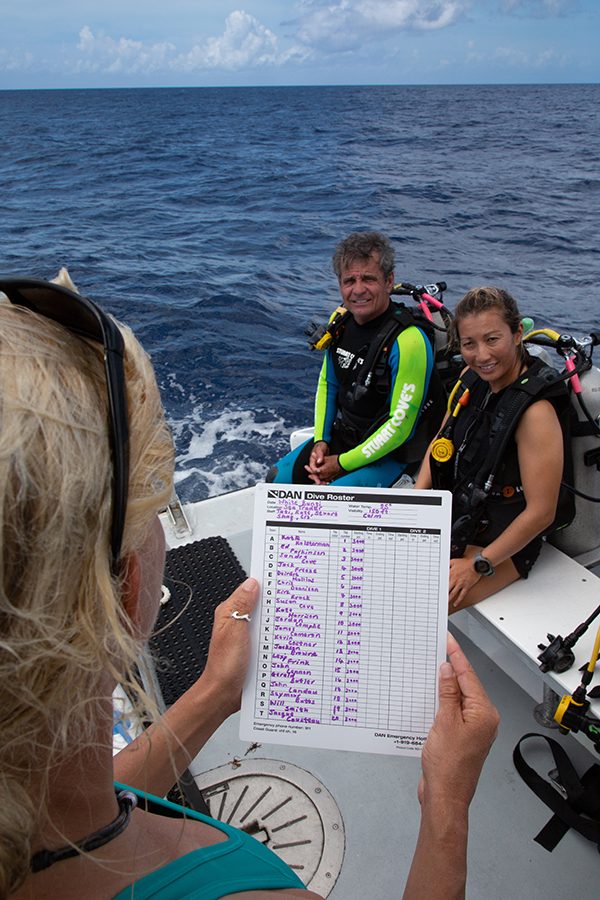DIVE BOAT
SAFETY

PERHAPS THE MOST COMMON WAY to get divers to a dive site is to make use of either a chartered boat or one owned by the dive shop. There are a multitude of boating-safety issues that need careful consideration during your risk assessment, over and above the safety of divers in the water. Your clients rely on you to take care of them during the time they spend with you, and in doing so proactively you build a reputation as a business that cares about your customers’ well-being.Here are some items that will set you on the right path to protecting your business.
Crew Training
AND COMPETENCE
The jurisdiction that a vessel will be operating in may have legal requirements related to the training, competence, and licensing of crew. In addition, an improperly trained or insufficiently skilled crew may make owners and/or operators accountable in the event of damage, injury, pollution, or other unexpected events. Insufficient training or skills may also render crew members incapable of handing a boat emergency or effecting a successful rescue. Appropriate training, refresher training, licensing, carrying out emergency drills, and monitoring performance are essential aspects of a safe dive boat operation.
Safety Equipment
ONBOARD
Boating and diving involve risks that may be exacerbated by the environment, the location, its remoteness, and/or the prevailing conditions. Most boats will be fitted with standard first aid supplies, however these may not be sufficient for dealing with the most likely medical situations in a diving environment. In addition, these degrade in humid conditions and often expire due to a lack of regular inspection. Boats should be fitted with equipment appropriate for the most likely medical emergencies, including emergency oxygen and even AEDs. All of these require protection against the elements as well as regular monitoring of their contents, condition and expiration dates. The DAN Risk Assessment Guide for Dive Operators and Dive Professionals offers comprehensive guidelines for the safety equipment that should be considered based on the actual operational circumstances and recommendations regarding inspection and maintenance.
Boating Emergency
ACTION PLANNING
Dive boat excursions are subject to unusual and sometimes unexpected risks, including but not limited to bad weather, a compromised vessel, diving injuries, and passenger illness. The lack of appropriate emergency action plans (EAPs) can quickly make a bad situation much worse.
EAPs are often created for theoretical situations but never practiced. This can result in a totally ineffective procedure that does not mitigate the emergency. Coast guard organizations may have mandatory drill requirements that the operator may be unaware of when venturing into other jurisdictions. A thorough risk assessment of actual operations, locations, and prevailing conditions and circumstances should reveal situations that could quickly turn into emergencies or require very specific actions.
Boat owners and operators often have many years of experience and may be experts in their field of operations. However, diving operations present unique hazards. Additional knowledge and effort are required to ensure you are prepared and properly equipped to ensure the safety of everyone on board.


DAN Customer Service
Mon–Fri, 8:30 a.m. – 5 p.m. ET
+1 (919) 684-2948
+1 (800) 446-2671
Fax: +1 (919) 490-6630
24/7 Emergency Hotline
In event of a dive accident or injury, call local EMS first, then call DAN.
24/7 Emergency Hotline:
+1 (919) 684-9111
(Collect calls accepted)
DAN must arrange transportation for covered emergency medical evacuation fees to be paid.
Medical Information Line
Get answers to your nonemergency health and diving questions.
Mon–Fri, 8:30 a.m. – 5 p.m. ET
+1 (919) 684-2948, Option 4
Online: Ask A Medic
(Allow 24-48 hours for a response.)
